 |
 |
 |
 |
 |
![]()
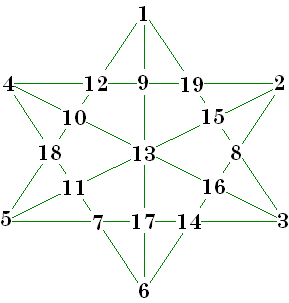 S = 46 S = 46
|
Magic Stars are
normally considered to be figures of 4 numbers in a row that add to the
magic constant. The magic hexagram is such a pattern, and consists of the
numbers 1 to 12 arranged in 6 lines of 4 numbers such that each line sums
to the constant S. The sum of the series 1 to 12 is 78, there are 6 lines
with each cell appearing in 2 lines, so the magic constant (S) is (2 x
78)/6 = 26. [1]
In 1989, Harold Reiter and David Richie considered an elaboration of this
figure [2]. They found that the answer was affirmative. Their algorithm and the resulting computer search program found all possible solutions. There are actually 9 separate magic constants, ranging from 46 to 54. This search problem was made manageable by using several short-cuts.
Their search involved only 18,264,704 checks instead of the 19! that would have been required if all combinations were checked. The number of basic solutions are:
[1]
http://www.geocities.com/~harveyh/order6.htm
|
||||||||||||||||||||
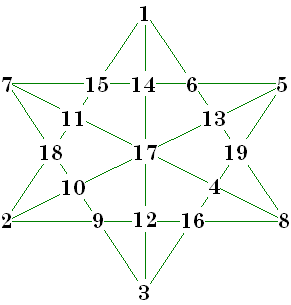 S=47 S=47 |
|||||||||||||||||||||
 S = 48 S = 48 |
The S = 51 solution below is the complement of the S = 49 solution shown.
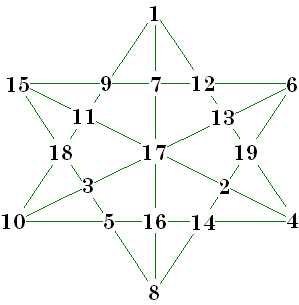 S = 49 |
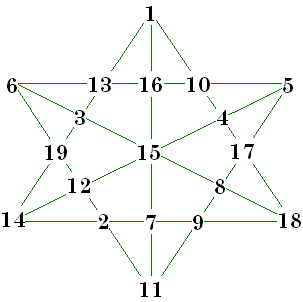 S = 50 |
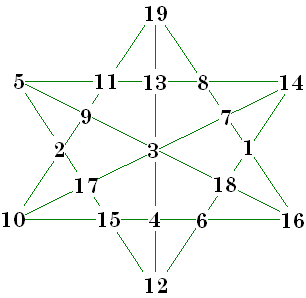 S = 51 |
Please send me Feedback about my Web
site!![]()
![]()

![]()
Harvey Heinz harveyheinz@shaw.ca
This page last updated
April 04, 2007
Copyright © 2002 by Harvey D. Heinz